Edinburgh is an ancient bastion shrouded in mist and covered in legends. It has repeatedly become the site of grandiose historical events. The memory of the legendary fighter for independence William Wallace, the “braveheart”, is still preserved here, images of the beautiful knightly novel “Ivanhoe” live in harsh castles, and the stone Walter Scott thoughtfully leafing through the book against the backdrop of Gothic domes.
The unbroken spirit of Edinburgh grows stronger in the piercing melodies of the Scottish bagpipes and makes the traveler plunge deeper into the layer of time. Through the centuries, outstanding Scots look at the tourist in the National Portrait Gallery, the ruins of Holyrood Abbey are silent witnesses of the former power of the church, and the walls of Edinburgh Castle still remember the last Scottish monarch.
What to see and where to go in Edinburgh?
The most interesting and beautiful places for walking. Photos and a short description.
- Royal Mile
- Edinburgh castle
- Holyrood Palace
- Holyrood Abbey
- Craigmillar Castle
- Puffin Mary King
- Scottish Parliament building
- Georgian house
- Cathedral of Saint Egidio
- Greyfriars Kirk Church
- National Museum of Scotland
- National Gallery of Scotland
- National Portrait Gallery
- Scottish Whiskey Heritage Center
- National Gallery of Modern Art
- Museum Our Dynamic Earth
- Royal Yacht Britannia
- Scott Monument
- Forth Bridge
- Edinburgh zoo
- Princes Street Gardens
- Royal Botanic Gardens Edinburgh
- Portobello beach
- Calton Hill
- Throne of Arthur
Royal Mile
The Royal Mile is the collective name for several streets located in the center of the Scottish capital. Their total length is approximately 1800 meters, which corresponds to the size of a Scottish mile. A large number of attractions are concentrated here. The mile starts at Edinburgh Castle Square, passes through High Street and Lawn Market, and ends at Holyrood Palace.

Edinburgh castle
The ancient residence of the Scottish monarchs, which is mentioned in documents from the XI-XII centuries. As a result of many years of war with England, the fortress was destroyed more than once, after which it was rebuilt again. In the 15th century, the residence was moved to Holyrood Palace, and Edinburgh Castle began to be used as a prison. In the 17th century, by order of the English monarch Charles II, an arsenal was placed in the fortress. It has been open to visitors since the 19th century.

Holyrood Palace
The official residence of the British monarchs in Scotland. The palace was erected in the 15th century under the Scottish rulers, later it was rebuilt under the English monarchs, since Scotland lost its independence. By the beginning of the 18th century, the building fell into disrepair, only under George IV they took up its restoration. From the 20s. XX century, Holyrood Palace becomes the residence where official events are held.

Holyrood Abbey
The abbey was built in the XII century under the monarch David I. Several Scottish rulers were crowned here. David II, James II and James V are also buried on the territory of the abbey. In the 16th century, as a result of the spread of the ideas of the Reformation, the monastery ceased to support the Catholic tradition and adopted a new doctrine. In the XVIII century, the facade of the main building collapsed, and they did not restore it. Now the complex of ruins is a protected historical monument.

Craigmillar Castle
Early 15th century castle, believed to have been built by one of the Craigmillar barons. The fortress experienced several major expansions in the 16th century. Queen Mary Stuart has repeatedly stayed in the castle. During the 18th and 19th centuries The building gradually fell into disrepair. In the middle of the 20th century, it passed to the state, after which some of the premises were put in order and opened to tourists.
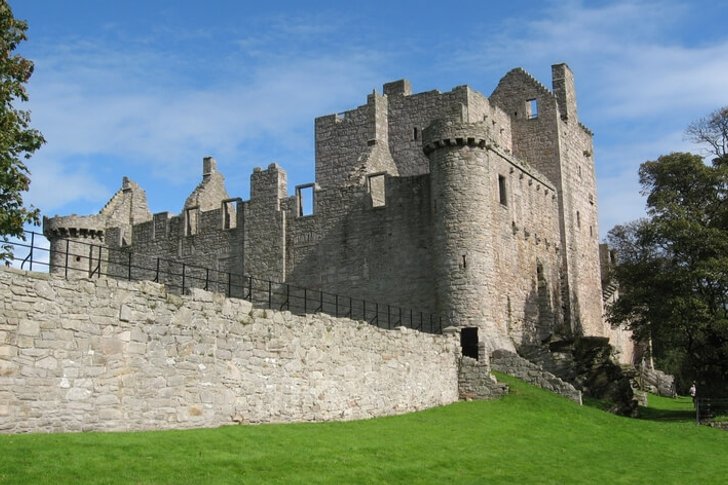
Puffin Mary King
An underground street within the Royal Mile, fanned by numerous legends. One of them says that during the plague epidemic all the infected were brought here, which is why a “city of the dead” was formed on the territory of the street and adjacent quarters. In some house, even a little girl with the plague was walled up alive. Dead End Mary King was underground due to the construction in the XVIII century of a new building for the city authorities. In 2003 the street complex was excavated and opened to tourists.

Scottish Parliament building
The Scottish Parliament ceased to exist at the beginning of the 18th century, when the union of England and Scotland was announced. For almost 300 years, local patriots have demanded the restoration of the national assembly. In 1997 a referendum was held and the Scottish Parliament was convened again. The new building for the revived legislative body was erected according to the project of the Catalan E. Miralles.

Georgian house
Residential building of the XVIII-XIX centuries, located on Charlotte Square Street. The building was designed by architect J. Craig in the best traditions of Georgian architecture. From the middle of the 18th century, there was so little space in the capital of Scotland that it was decided to build a New Town next to the old Edinburgh. The Georgian House is one of the first structures erected as a result of the expansion of the capital of Scotland.
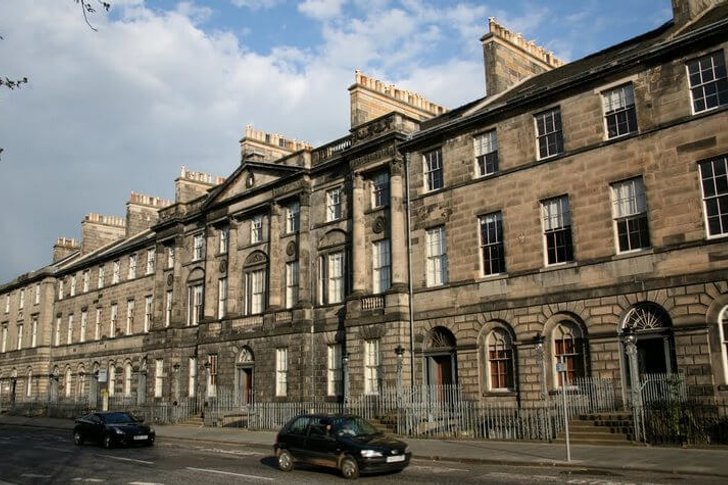
Cathedral of Saint Egidio
The cathedral is the main temple of the Presbyterian Church of Scotland, it was named after the patron saint of lepers and the maimed - St. Giles (St. Egidius). The building was erected in the XIV century. The temple is notable for its massive and gloomy architecture, but the graceful Victorian stained-glass windows that adorn the main facade save the situation. Inside the cathedral is the Thistle Chapel, where initiation into members of the order of the same name takes place.

Greyfriars Kirk Church
The temple is within the Royal Mile. It was erected at the beginning of the 17th century on the site of a Franciscan monastery. Greyfriars Kirk was the first church in Edinburgh built after the victory of the ideas of the Reformation. At the temple there is a cemetery, where the earliest burials began in the 16th century during the existence of a Catholic abbey. The church is the oldest building outside of Old Edinburgh.

National Museum of Scotland
The collection was formed as a result of the merger of the Royal Museum and the Museum of Antiquities of Scotland. The exposition is located on the territory of two buildings, one was built in 1998, the other is an example of Victorian architecture of the 19th century. The museum exhibits archaeological finds, items belonging to the heritage of national and world culture, natural science exhibits and much more.
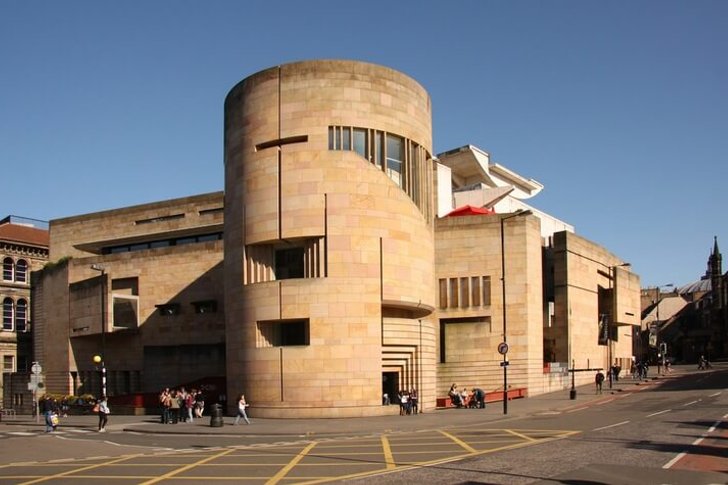
National Gallery of Scotland
An art gallery where a collection of paintings, drawings and sculptures from the Renaissance to the beginning of the 20th century is stored and exhibited. The museum building is located near the Royal Academy of Sciences, it was built in the classical style. In addition to the exhibition halls, on the territory of the National Gallery there is a library with archival documents and valuable books of the 13th-19th centuries.
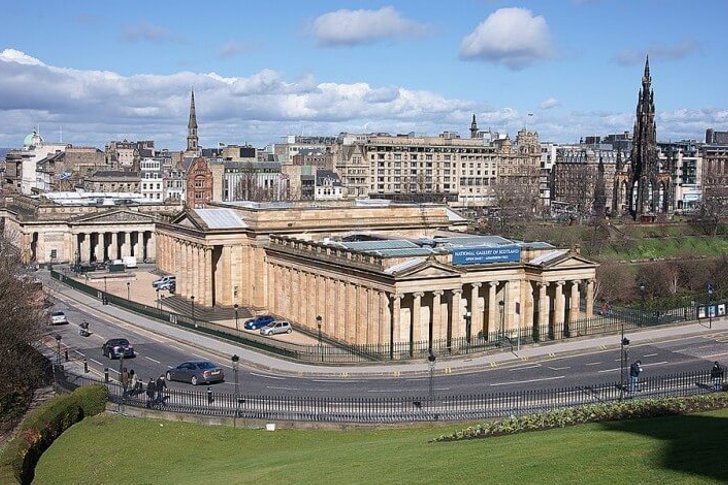
National Portrait Gallery
The basis of the exposition of the National Portrait Gallery was the private collection of the Earl of Buchan, who collected portraits of famous Scots. The museum was organized at the end of the 19th century at the expense of the local philanthropist J. Ritchie. The neo-Gothic building for the gallery was designed by R. Anderson. The collection consists of portraits of kings, writers, scientists, statesmen and national heroes.
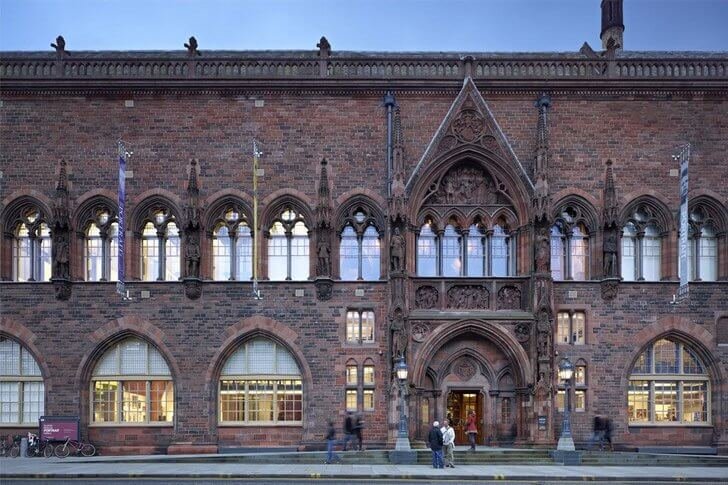
Scottish Whiskey Heritage Center
A museum dedicated to the most famous and revered national drink of Scotland - whiskey. The exposition will tell about the history of the drink and reveal some of the secrets of its preparation. Due to its incredible popularity, the museum is open during holidays and weekends. During the tour, tourists will be able to see the process of making whiskey and learn to distinguish the varieties of the drink even without tasting.

National Gallery of Modern Art
The collection is housed in a historic 19th-century neoclassical building that originally served as a school. The gallery exhibits interesting and relevant works by contemporary artists. There are also paintings by recognized masters - Picasso, Bracco, Matisse, Warhol, Nicholson and other authors. There is a garden near the museum building, where you can see some interesting sculptures.

Museum "Our Dynamic Earth"
Science and entertainment center and museum, whose exposition is based on modern technologies. The tour begins with landing in a "time machine" that takes a person 14 billion years ago to the time of the Big Bang, which resulted in the creation of the Universe. Gradually, the whole history of the formation of stars, the solar system, our planet, the origin of life and evolution passes by the viewer.
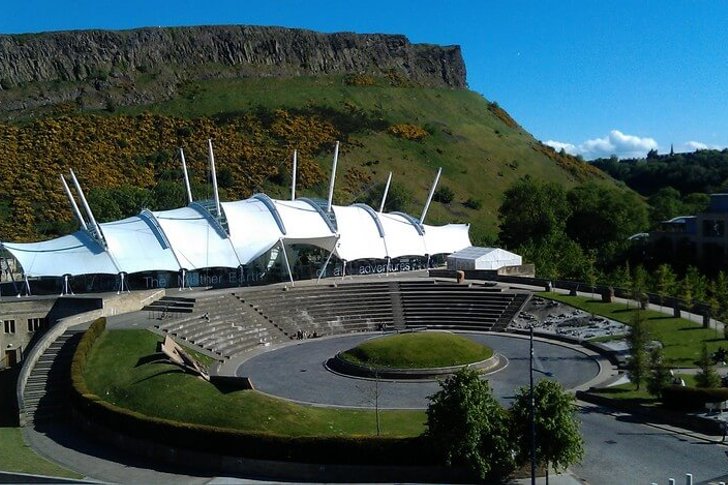
Royal Yacht Britannia
A 1953 yacht built for the current Queen of Britain, Elizabeth II. Since 1997, the royal family has not used the ship, so the Britannia was moored at the pier in Edinburgh. Now the yacht is used as a museum. Visitors can see the living quarters, the dining room, the main halls. Compared to modern luxury yachts, the inside of the ship looks quite modest, despite the status of the former royal residence.
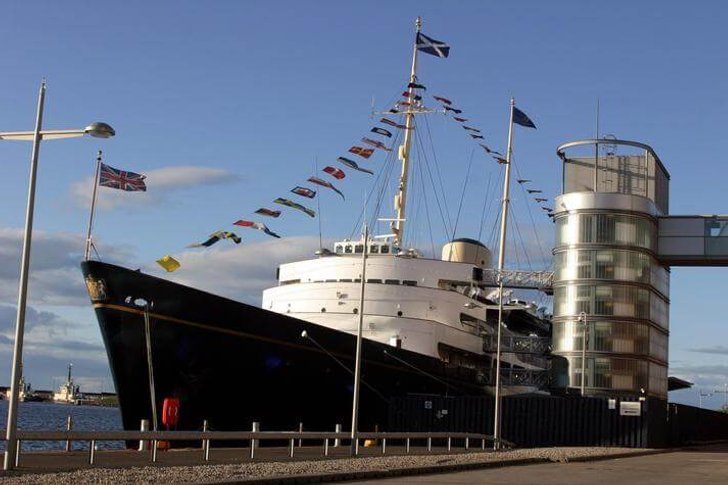
Scott Monument
A grandiose neo-Gothic monument dedicated to the writer Walter Scott, built in the 19th century according to the design of J. Kemp. The monument was built of sandstone, so over time its surface has darkened. In the 1990s there was a need for restoration. It was produced using the same material that was used in construction. The monument resembles the shape of a hollow bell tower with a sharp spire. Inside it is a statue of the writer.
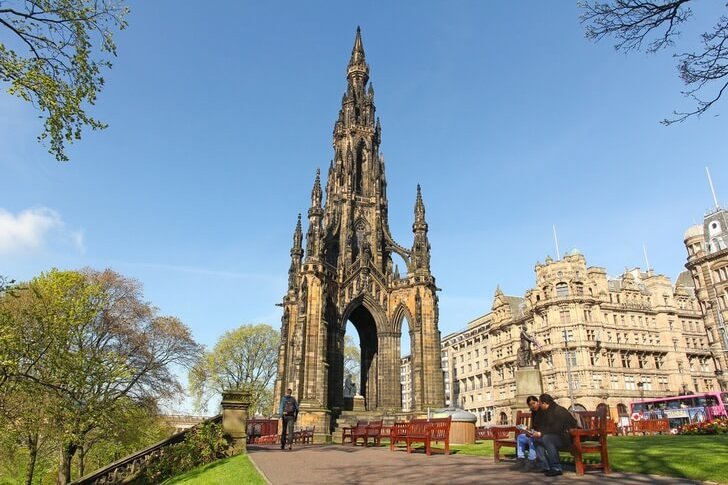
Forth Bridge
Railway bridge across the Firth of Forth linking Edinburgh and the Fife region. The structure has a length of more than 2.5 km., It is completely made of steel. The bridge was built for 7 years, several dozen people died during the work. The construction of the Fort Bridge required 10 times more metal than the Eiffel Tower. The bridge is supported by three powerful pillars over 100 meters in height.

edinburgh zoo
The zoo was founded at the beginning of the 20th century at the initiative of the Royal Zoological Society. From the very beginning, natural habitat conditions were created for animals, if possible. Now in European zoos this is a common and mandatory practice, but almost 100 years ago it was a fairly progressive view of keeping animals. One of the first inhabitants of the Edinburgh Zoo were penguins.

Princes Street Gardens
A popular public park in the center of Edinburgh, where many national festivals, concerts and other events take place. The gardens were created as a result of the expansion of the capital and the draining of Loch Noor in the early 19th century. The park has a fountain, a concert venue, a flower clock, several monuments and the Eye of Edinburgh - a 33-meter Ferris wheel.
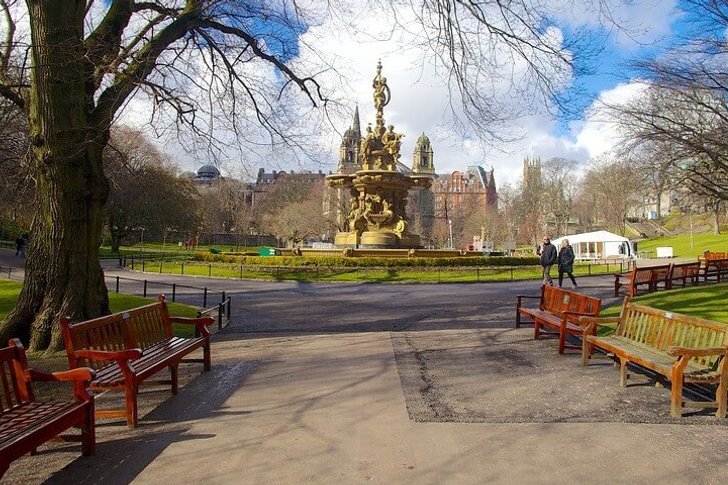
Royal Botanic Gardens Edinburgh
The Botanical Garden was founded in 1670 by scientists R. Sibbald and E. Balfoer as a garden with medicinal plants. In the XVIII and XIX centuries. He moved twice to a new location. The garden covers an area of 25 hectares, it includes: palm greenhouse, rockery, heather garden, arboretum, palm greenhouse, Chinese garden, ecological and demonstration departments.

Portobello beach
The beach area is located east of Edinburgh, a 20-minute drive from the city. In the late 19th and early 20th centuries, a popular seaside resort was located here. The water temperature of the Firth of Forth is not conducive to comfortable swimming even in warm weather, however, many people come to Portobello Beach to sunbathe, have a picnic or drink a pint of beer in the many pubs.
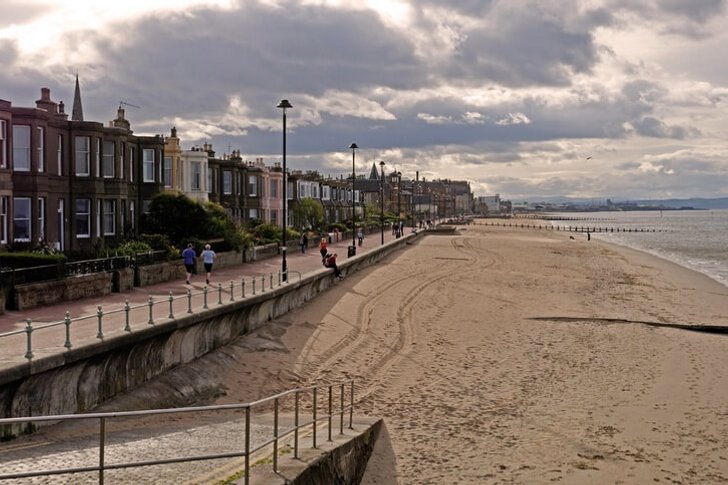
Calton Hill
The city hill, on which there is an observation deck and several historical buildings: a monument to Admiral Nelson, the Acropolis, a monument in honor of the philosopher D. Stewart and others. The hill was outside Edinburgh until the middle of the 19th century. First, a prison was built here, then the building of the Scottish government appeared. At the foot of Calton Hill is Holyrood Palace.

Throne of Arthur
Plateau on top of a mountain, located on the territory of Holyrood Park. From here you have a great view of Edinburgh. The North Beach Bridge, the new Houses of Parliament, Holyrood Palace, the Royal Mile and other attractions open up to the eye. The observation deck can be accessed via a stone staircase. Arthur's Seat is the highest point in the Scottish capital.
